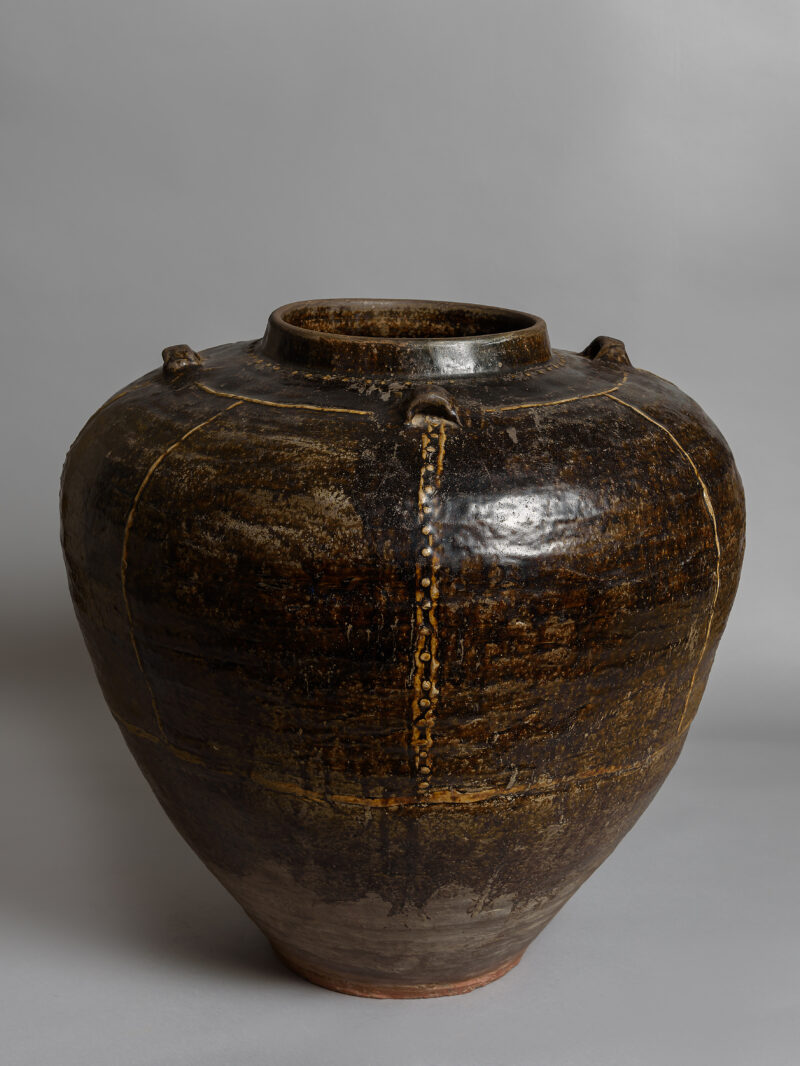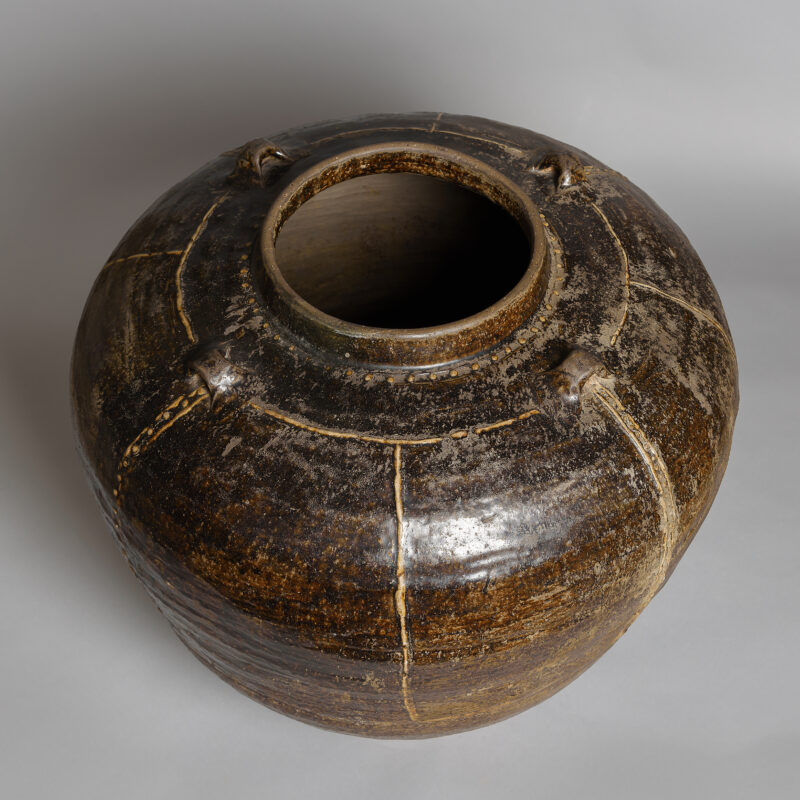
Rare Ceramic Vessel "Martaban"
Impressive storage jar with a dark brown and light glaze from the area of Burma, today’s Myanmar. The large and heavy ceramic Martaban is beautifully glazed in brown with light beige — yellowish decorations. The bottom and the lower third of the vessel are unglazed.
Bright knobbed bands embellish the vessel vertically and horizontally all around. The short neck sits on the vessel’s broad shoulder with four small handles. These handles were used for fixing with ropes for transport by land and sea.
Martaban, sometimes also pronounced Martavan, were large, heavy storage vessels used for shipping goods from the port of Martaban to Southeast Asia, India, and the Middle East, among other. These beautiful and robust storage and transport vessels were named after the port of Martaban, today Mottama, located in Mon State. Mottama is situated on the north bank of the Saluen River, opposite Mawlamyaing, the capital of Mon State. This is where Martaban Bay is located, fed by the Irrawaddy and Saluen rivers.
In written records from the 14th century, more precisely 1350, Ibn Batuta, who also visited the port of Martaban on his travels, reports: “Martabans are large vessels filled with pepper, lemon and mango, all treated with salt for a voyage” (Gutman: Burma’s Lost Kingdoms. The Martaban Trade 2001, S. 106 – 112).
Ibn Battuta was from Tangiers in Morocco and a world traveler, adventurer, explorer, scholar, diplomat and reporter in the 14th Century. With his travel book “Rihla” (“Journey”) he wrote one of the most important travelogues of the Middle Ages. In 1325, a year after Marco Polo’s death, the 22-year-old embarked on one of his long journeys. With ships, carriages and camels he explored East Africa, the Persian Gulf, Indonesia, India, China and Spain. Ibn Battuta is considered the “Marco Polo of the Orient”
The port of Martaban was significant for the transport of Chinese goods to the West by ship, especially in the 16th and 17th Century. The importance of Martaban as a production site for ceramics can be traced back to the 7th century AD.
This Martaban is a truly stunning object in perfect condition and of beautiful proportions and patina. Today, pieces of this kind can usually only be found in museums collections, such as the Metropolitan Museum of Art New York (The Metropolitan Museum of Art. “Japanese Bamboo Art: The Abbey Collection,” June 13, 2017 – February 4, 2018)

